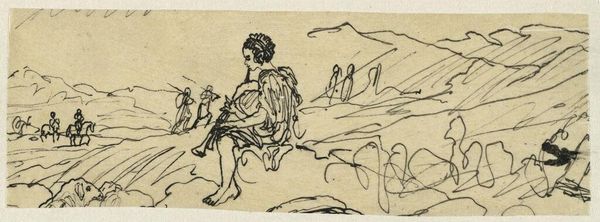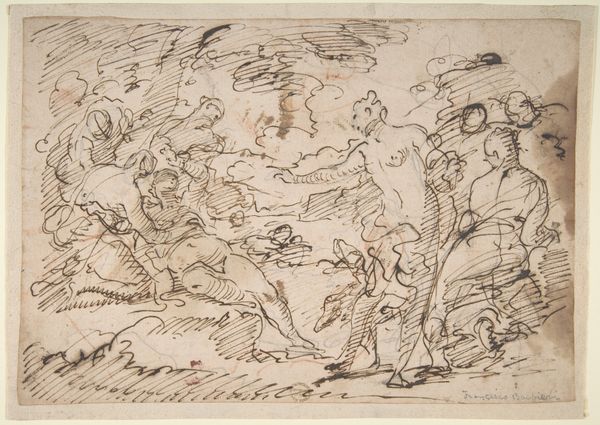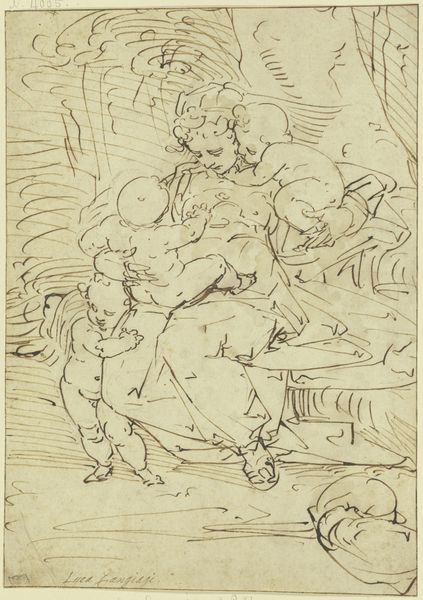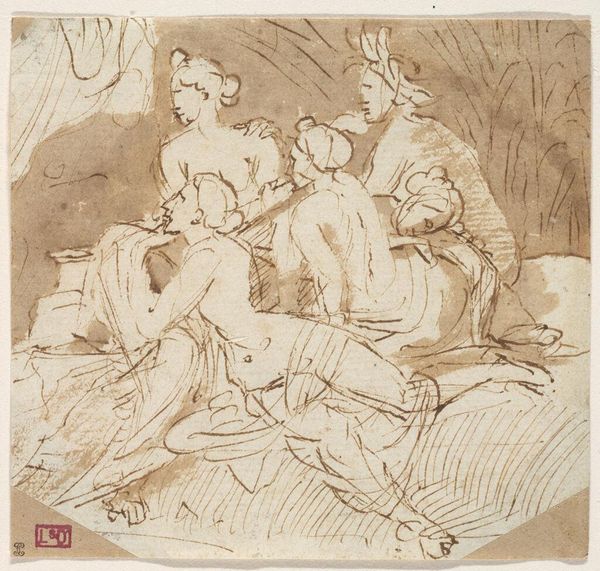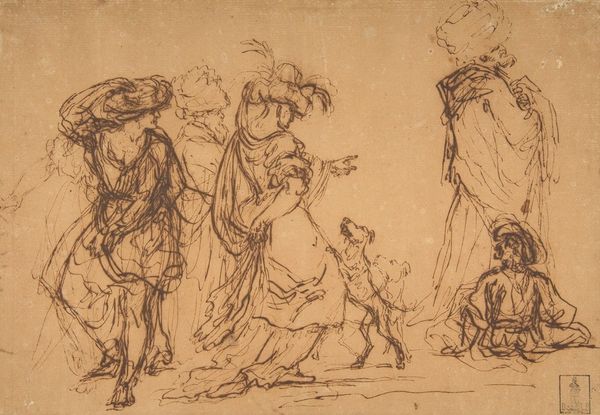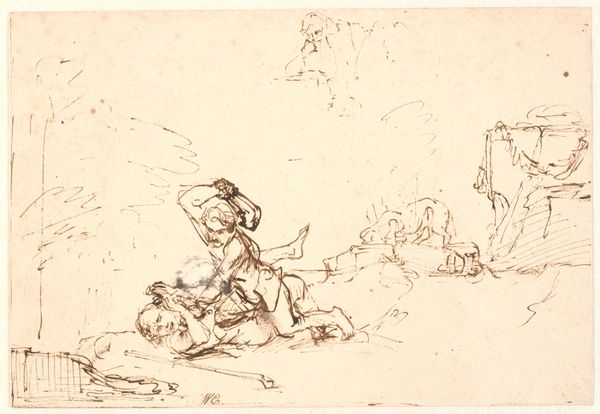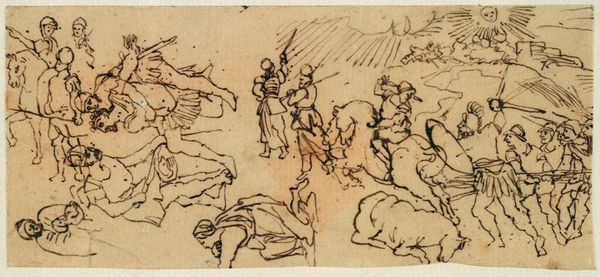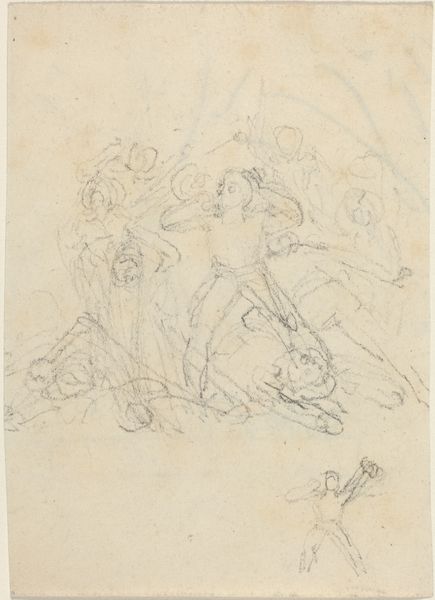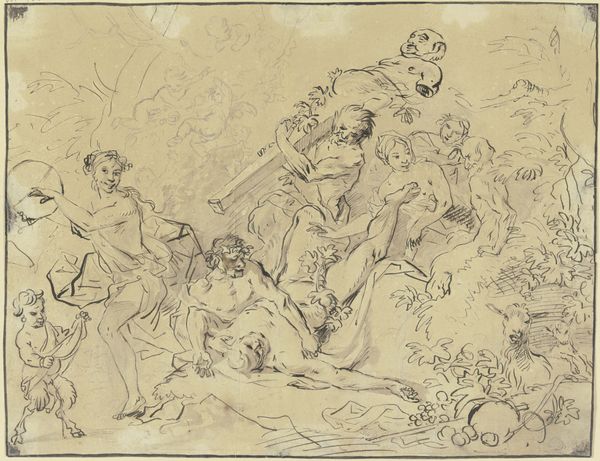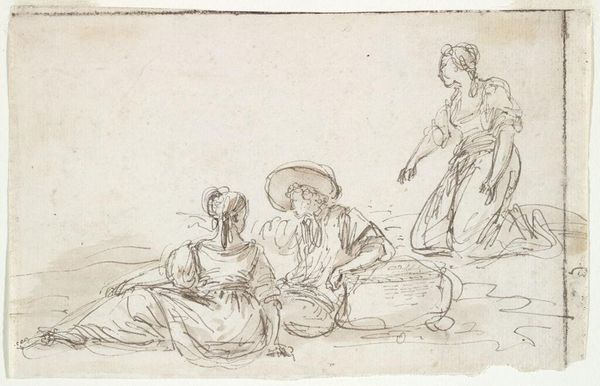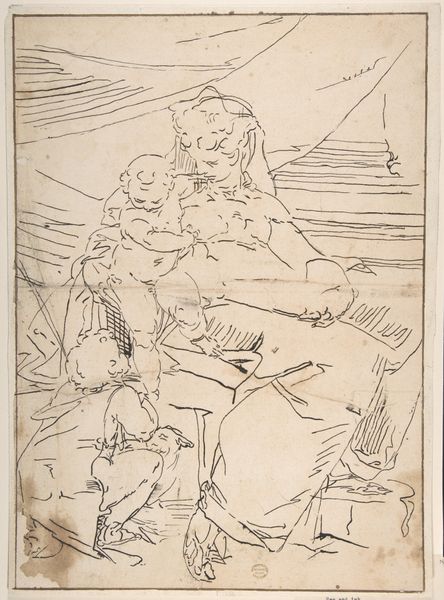
drawing, print, paper, ink, pen
#
drawing
#
ink drawing
#
allegory
#
baroque
# print
#
pen sketch
#
figuration
#
paper
#
ink
#
pen
#
history-painting
Dimensions: 130 × 164 mm
Copyright: Public Domain
Curator: The work before us is titled "Death of Dido," a pen and ink drawing of undetermined date by Donato Creti. Its wispy, unfinished quality gives it an air of spontaneity. What are your initial thoughts? Editor: Melancholy. It has the lightness of a sketch, but that somehow underscores the heavy subject matter. All these figures seem suspended in grief, adrift like the lines themselves on the page. Curator: Yes, the medium certainly contributes to that. Creti's use of pen and ink allowed for quick execution, likely preliminary work for a larger history painting. Note the visible process, the searching lines – a direct record of artistic labor. Also, consider paper: widely accessible but inherently fragile, just like Dido’s life here depicted. Editor: Dido is a potent image! She’s there at the center, drawing our eye. Her action, raising the sword to end her life rather than live without Aeneas, carries echoes of sacrifice, betrayal. You see the cherub there; is that Cupid lamenting her choice or perhaps stoking the flame of her heartbreak? The symbolism is really thick. Curator: And note how that grief is itself manufactured through visual convention! Creti uses standard figure groupings derived from Renaissance and Baroque traditions, repurposing visual languages to underscore this political and personal tragedy. Was this a luxury good meant to elicit empathy, or perhaps a polemical statement of power? The possibilities intrigue me. Editor: Well, her story has always been political! Dido choosing death, choosing Carthage, over a future dictated by a foreign love… it resonates still today. It’s about autonomy, self-determination symbolized so vividly through this dramatic moment. I also can't get past the material reality you point out. Curator: Indeed! By engaging with the physicality of the materials, we access not just the narrative, but the social fabric within which that story was told and consumed. Editor: Right. Analyzing Creti’s choice of imagery certainly shows how timeless the story feels. It's almost a warning in a way. Curator: That convergence is striking; thinking of these themes within the context of the paper and ink used to communicate it, underscores its lasting appeal.
Comments
No comments
Be the first to comment and join the conversation on the ultimate creative platform.
